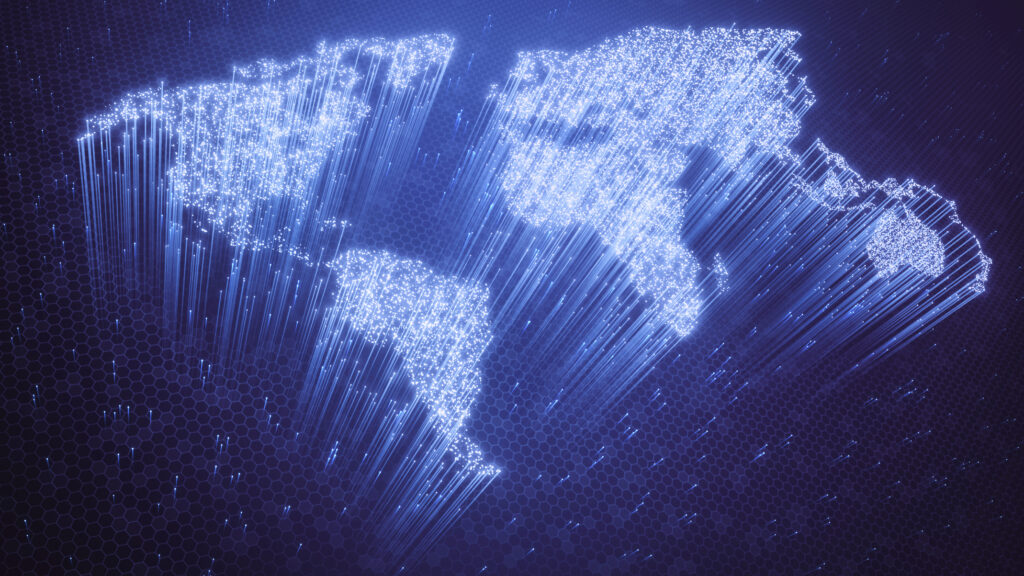
Fibre optic world map, illustration.
Fiber optics have revolutionized data transmission since their introduction, significantly enhancing global communication networks. This technology, which began with a pioneering paper by physicist Narinder Singh Kapany in November 1960, has evolved into a vital component of modern telecommunications, powering both industrial operations and everyday internet access.
Kapany’s groundbreaking article published in Scientific American outlined how light could travel through glass fibers, leading to efficient data transmission. The concept of bundling these fibers allowed for the development of fiber optic communications, which have steadily replaced older copper wiring systems. Compared to traditional methods, fiber optics offer lower latency and greater bandwidth, making them essential for long-distance communication.
Significant Advancements in Speed and Efficiency
Over the past four decades, fiber optic technology has achieved remarkable milestones in transmission speeds. In 2006, NTT set a record with speeds of 111 gigabits per second, while in 2009, researchers at Bell Labs recorded a staggering 15.5 terabits per second across a single 7,000-kilometer fiber cable. More recently, the National Institute of Information and Communications Technology (NICT) achieved a groundbreaking transmission capacity of 22.9 petabits per second. These advancements highlight the ongoing improvements that fiber optics bring to data transmission capabilities.
The shift to fiber optic technology has also been felt by consumers, especially with the rise of fiber optic broadband services. These services provide significantly faster internet speeds compared to copper-based options, enhancing online experiences for millions of users.
Innovations on the Horizon
Recent developments suggest that the future of fiber optics may lie in plastic optical fiber (POF) technology. A study conducted in 2025 indicated that POF could offer substantial benefits for data centers and networking. Researchers from Keio University in Japan have been exploring new plastic-based solutions ahead of the upcoming Optical Fiber Communication Conference (OFC). Their work focuses on addressing critical challenges faced by artificial intelligence infrastructure, such as the need for lower latency and ultra-high capacity communication between graphics processing units (GPUs) and accelerators.
One of the key advantages found in this research is that plastic-based optics can significantly reduce manufacturing costs compared to traditional glass options, while maintaining high transmission speeds and signal integrity. This innovation could pave the way for even more efficient fiber optic networks in the near future.
The evolution of fiber optics from Kapany’s early vision to the current state of the technology showcases the remarkable progress made in telecommunications. As researchers continue to push the boundaries of what’s possible, the future of global communication looks increasingly promising.







